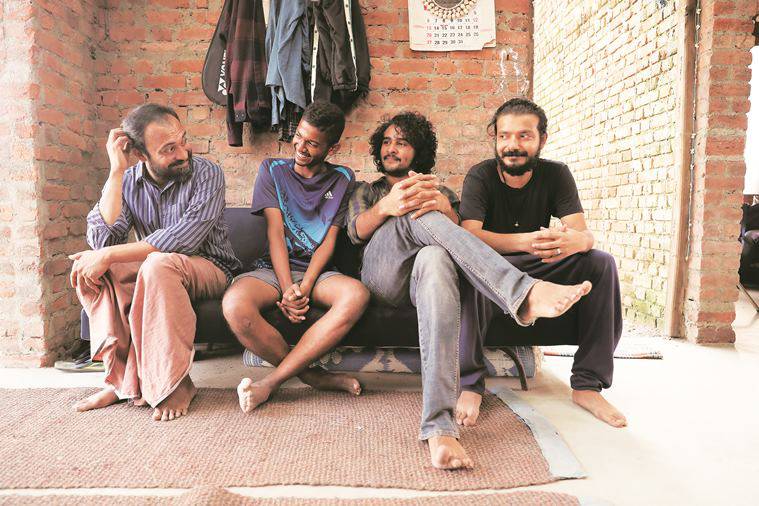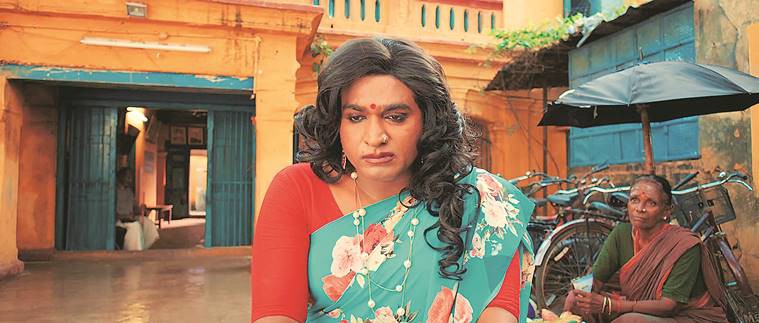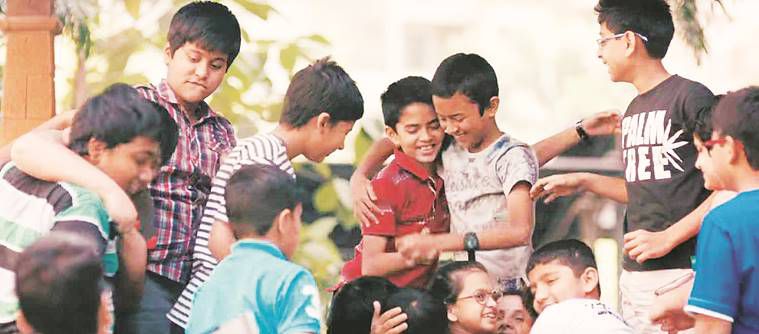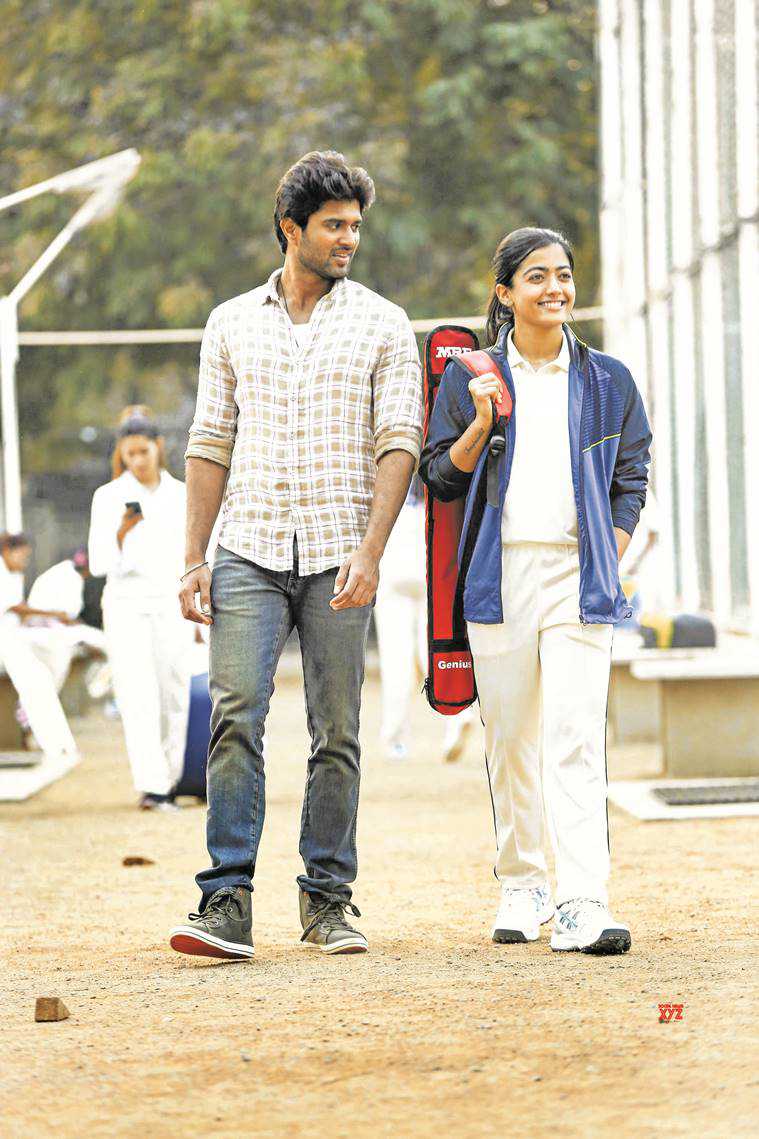- India
- International
The year’s best Indian films go beyond Hindi cinema
In recent times, Malayalam, Tamil, Telugu, Marathi and Assamese cinema have surpassed Hindi films in storytelling and craft.
 MALE TALES: Still from the Malayalam film Kumbalangi Nights.
MALE TALES: Still from the Malayalam film Kumbalangi Nights.
Sometimes, a film is exactly right. There’s a moment in Kumbalangi Nights which tells you why its name is so apt. It is, yes, night, and a character walks into a room, and tells another: Come out, the water is beautiful. Everyone in the house, situated at the shore’s edge on the island of Kumbalangi, files out. And this is what they, and we, see: light shining, rippling, bouncing off the water, lapping gently in the night. Hands are dipped in, and come out silvered. Smiles appear on still faces. It is a scene of beauty, shared by a group of people connected to each other in messy ways, each looking for a connection, a groove. The wordless communion is calming, centring: you witness a sloughing off of tensions, finding a place, and space.
Kumbalangi Nights, directed by first-timer Madhu C Narayanan, 42, is one of the best films I’ve seen this year, and with each viewing (I’ve seen it thrice), I’ve liked it more. The primary language is Malayalam, with a bit of Tamil and English thrown in, but the film sets up and stays in a continuous dialogue with us: no words are necessary.
Even with superlative subtitles, there will always be a loss in translation, but there’s no mistaking what this film manages to do — hold up gender roles for examination while commenting on race and religion, all the big vexed issues which most mainstream movies, especially those made in formula-bound, star-driven Bollywood, tip-toe around.
Malayalam cinema has always had a group of committed filmmakers who have created non-formulaic, non-starry spaces. Filmmakers from Kerala, over the years, have shown that it is perfectly possible to make movies about nothing-at-all-and-everything-withal, films which are accessible and yet do not pander, films which respect the intelligence of the audience while not talking down to them. Marathi cinema has also, over the last 15 years, been a happy holder-aloft of this kind of cinema. A younger lot of practitioners from other states have been actively staking claim in this territory: some of the most interesting, boundaries-pushing Indian cinema, as always, continues to be in languages other than Hindi.
 Vijay Sethupathi in the Tamil film Super Deluxe.
Vijay Sethupathi in the Tamil film Super Deluxe.
Another film that has blown me away is Super Deluxe (Tamil), Thiagarajan Kumararaja’s follow-up to his rollicking Aaranya Kaandam (2011). It follows the same four different-but-ultimately-connected segments structure from his debut feature, but takes the craft several notches higher. The most interesting parts offer us startling subversions: a missing father turns up as a transgender person, and struggles for acceptance from “his” wife and child. A teenage boy, horrified that his mother works as a porn actress, is put in his place by her calm take-down. “It is a job,” she says. “If you can watch it, I can work in it.” And a wife is shown not only as being desirous and adulterous, but, gasp, refusing to grovel for forgiveness from her aghast husband. A bunch of terrific actors are at work here — Samantha as the wife who wants another man in her bed, Fahadh Faasil as her cuckold husband, Ramya as the dignified porn actress, and above all, the fabulous Vijay Sethupathi as Shilpa, the transwoman, who bids fair to be my favourite movie character of 2019.

“For the kind of film it is — it polarised the audiences, and rubbed lots of people up the wrong way — it’s done really well,” says Kumararaja, 43. I ask him if he consciously set out to turn over conventional gender roles while making the film. “It wasn’t like that,” he says. “What I was after was creating characters that you could take home with you. Say Shilpa accompanies you to a parlour or a bar, what would happen?” It has taken him nine years to make his second film; I can’t wait for his next.
Another filmmaker who has consistently been creating crackerjack characters and putting them into volatile situations where anything can happen, is Sanal Kumar Sasidharan (Oraalppokkam, 2014, Ozhivudivasathe Kali, 2015, and S Durga, 2017).
The last features a young couple on the run, and the story of that one night unspools like a charter of centuries-old misogyny and patriarchy, where an accusatory gaze at the woman stays unwavering: what is she doing, even if she is an adult and of age, with a man, alone, so late at night? S Durga, set in Kerala, could have been anywhere in India.
 Still from Marathi film Dhappa.
Still from Marathi film Dhappa.
Sasidharan’s latest, Chola, which screens next month at the Venice Film Festival, is about a couple of teenagers stuck in a nightmare in a hotel room. Is it similar to S Durga? ‘No,’ he says, ‘I like to keep changing with each film’. What Sasidharan does keep consistent is the sharpness with which he draws his characters, and how he reveals the “mindset of society”. “To me, that is the most important thing,” he says.
I catch Sasidharan, 42, just as he is about to go off the radar, somewhere in the far reaches of Spiti Valley, to shoot his new film. He is already in another zone, but pauses long enough to tell me that he hopes to release Chola nationwide after its Venice outing. It has gone straight on to my 2019’s must-watch list.
Please place Bulbul Can Sing (2018), Rima Das’s companion piece to Village Rockstars (2017) on yours. Das’s lovely coming-of-age tale, which won the National award for Best Assamese Film last week, has been doing the festival rounds to much applause, and she hopes to release it soon. Ditto for Bhaskar Hazarika’s Aamis, a film that pulls together a mind-bending, jaw-dropping collage of love, transgression, and female desire. It premiered at the Tribeca Film Festival in New York a few months ago, and the director is now working on getting his film out in India. His previous film Kothanodi (2015) took a bunch of well-loved folk tales from Assam and turned them into a startlingly dark, visceral set-piece. Aamis, set in contemporary Guwahati, takes Hazarika’s penchant for excavating and examining the darkness of the human heart a big step forward.
The difficulty of getting their films out, theatrically, is something all these filmmakers speak of. Kothanodi did get a limited release, and a set of cinema lovers did seek it out; Hazarika, 43, is looking to release Aamis after October, and hopes it will go bigger. “What’s important to me is to get back the money my producers put in,” he says. “It would really help to see an uptick in numbers.”
 A still from Telugu film Dear Comrade.
A still from Telugu film Dear Comrade.
You hear this sentiment being echoed by filmmakers across the country, especially those who operate in the independent space. And often it alludes to films made in a certain language not being able to travel within the country. Umesh Kulkarni, an established name in Marathi cinema (Vihir, 2009, Valu, 2008, Highway, 2015) speaks about how it may be easier at one level to get films-with-a-difference released within Maharashtra, but taking them out, into other markets, poses a tough challenge. A film like Dhappa, which he co-produced with long-time collaborator Girish Kulkarni, and which released earlier this year in the big centres in Maharashtra, would have greatly benefited if it had had the chance to travel. Dhappa uses children, like so many Marathi films, to say the big things we’ve stopped saying these days: it is about tolerance and respecting all communities and religions. But he also knows that a film has a life beyond the movie hall. “What has made a big difference is the presence of streaming platforms,” he says. His own brilliant coming-of-age Vihir, which vanished from theatres before it could truly be seen, is now available on Zee5.
The rapid growth in the number of streaming platforms has truly changed the game. This kind of cinema used to be available only at film festivals (open only to delegates ), or strictly-by-invitation private screenings, or scant theatrical shows at inconvenient times ( if you were lucky enough to live in a town with a theatre, which would actually programme these movies). The elitist door-keeping kept those without access out.
Now anyone with an internet connection and a device can watch anything, anytime, anywhere. Kumbalangi Nights, for example, is now on Amazon Prime. There’s also Netflix, Zee5, Hotstar, ALTBalaji, and more are coming up. Films from around the country are also available on satellite channels as Hindi dubs, but there you get mostly mainstream, starry vehicles. For smaller, edgier, sharper films to get visible and stay available, streaming is the way out. You can, should you wish to, search for and watch the roaring Telugu 2017 hit Arjun Reddy, which led to the 2019 Bollywood remake Kabir Singh, which, in turn, has opened up a raging and necessary debate around toxicity, masculinity, and consent: in a post #MeToo world, any and all conversations around these subjects are important.
A fortnight ago, I watched Vijay Deverakonda, the charismatic leading man of Arjun Reddy, who is now a bona fide star, attempting a backflip in his new movie, Dear Comrade, directed by Bharath Kamma. The thing between the male and female lead is “comradely”: she is a serious cricketer, and refuses the advances of a senior official to the detriment of her career. When she says “no”, the hero backs her all the way. A man supporting his woman to go out and do what she’s set her heart on is something that makes this uneven film worth our time. A supportive conversation around consent and sexual abuse would be a daring thing for mainstream cinema in any language; it is even more so for the very macho Telugu cinema, especially for Deverakonda whose quick-to-anger, entitled, brash Arjun Reddy became an overnight sensation.
In fact, a heartening churn is underway in Telugu cinema, and that’s evident in the success of this small film with a big heart — Care Of Kancharapalem (2018), directed by debutant Venkatesh Maha. It is a highly unusual love story featuring four couples, a deeply rooted film redolent with the sights and smells of its locations (Kancharapalem is on the outskirts of Vishakhapatnam), and unfolds in ways that surprise you, and leave you thinking.
 Still from Assamese film Aamis.
Still from Assamese film Aamis.
Maha, 30, lived as a paying guest in Kancharapalem in 2009, and was drawn back to it seven years later, when he was on the verge of making his first film. “I just got on my bike (motorcycle) and went, and by the time I covered the 700-odd km from Hyderabad, I knew the shape of my film.” The people in town, some who remembered him from his earlier stay, including his landlord, were very helpful, and he cast many of them, he says. The presence of non-professional actors made the film instantly real, and relatable.
As Maha puts it, the universe conspired to connect him with his producer, the US-based Praveena Paruchuri (who also has a significant role in the movie). In another stroke of good fortune, he found his film being whole-heartedly “presented” by top star Rana Daggubati — now a familiar face in Bollywood productions. That opened up his “small” film to big numbers : for a DIY film (15-20 people made up the cast and crew), it was a near miracle. “And this much I have learnt from the experience, that if you give people a film they cannot predict, they are going to love it.”
This is precisely what has happened with Kumbalangi Nights. Narayanan still can’t get over how his film has touched the hearts of so many non-Malayalam speakers. “I don’t know what to say,” he tells me over the phone, but you can hear the bemused delight in his voice. This is his first feature, but he has been in the industry for the past 10 years, learning the ropes from his mentors Aashiq Abu and Dileesh Pothan, both of whom have made a series of critically and commercially successful films in the past decade.
I ask Narayanan where the inspiration of the film came from. He credits his scriptwriter Syam Pushkaran (who also wrote the terrific Maheshinte Prathikaaram, 2016) with the full-bodied, lived-in feel of the story, set in the lovely island in the backwaters. Pushkaran knew Kumbalangi from the inside, and Narayanan too made it a point to familiarise himself with the place, to learn its rhythms, and byways.
The result is marvellous slice-of-life cinema, told through two very different families. Eldest sibling Saji presides over a tumbledown heap that functions as home to him and his brothers. Bonny, who has a hearing impairment but is sensitive to everything around him, makes an uneasy bridge between Shaji and the two younger ’uns: Bobby, the handsome layabout, and the youngest, Frankie, who is ashamed to get his friends home.
Things start to change when the women in the movie start taking charge: the mother to the four brothers who refuses to live with them, is a remarkable creation. Mothers do not always have to mother all their life; they can also be themselves. The bright-eyed Babymol’s outbursts lead reluctant lover Bobby to take a long, hard look at his meanderings, and her sister Simi finally standing up to her controlling husband, Shammy, takes the film into an altogether different zone where the four constantly-at-odds brothers finally come together, to act as one.
Masculinity can be toxic, and dangerous, as seen in Faasil’s Shammy. What Kumbalangi Nights does is amazing. It shows that it can also be just the opposite: softer, more accommodating, nurturing. The men who lead broken lives in a ramshackle home show us that it is possible to be all of the above, and still be men. “Men feel they have the right to dominate,” says Narayanan. “Shammy can’t tolerate the idea that women have a voice, and power.” The climax is unexpected, and yet satisfactory: women’s voices are freed, and order is restored.
Narayanan has made a film for the ages. We speak of the music which is such a strong, stirring element, and he says, “We wanted to make the film like a poem.” And that’s what it is, a shimmering, lyrical ode to life and love.
Apr 18: Latest News
- 01
- 02
- 03
- 04
- 05








































